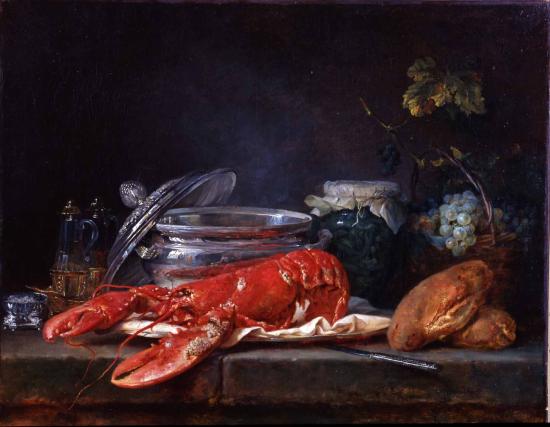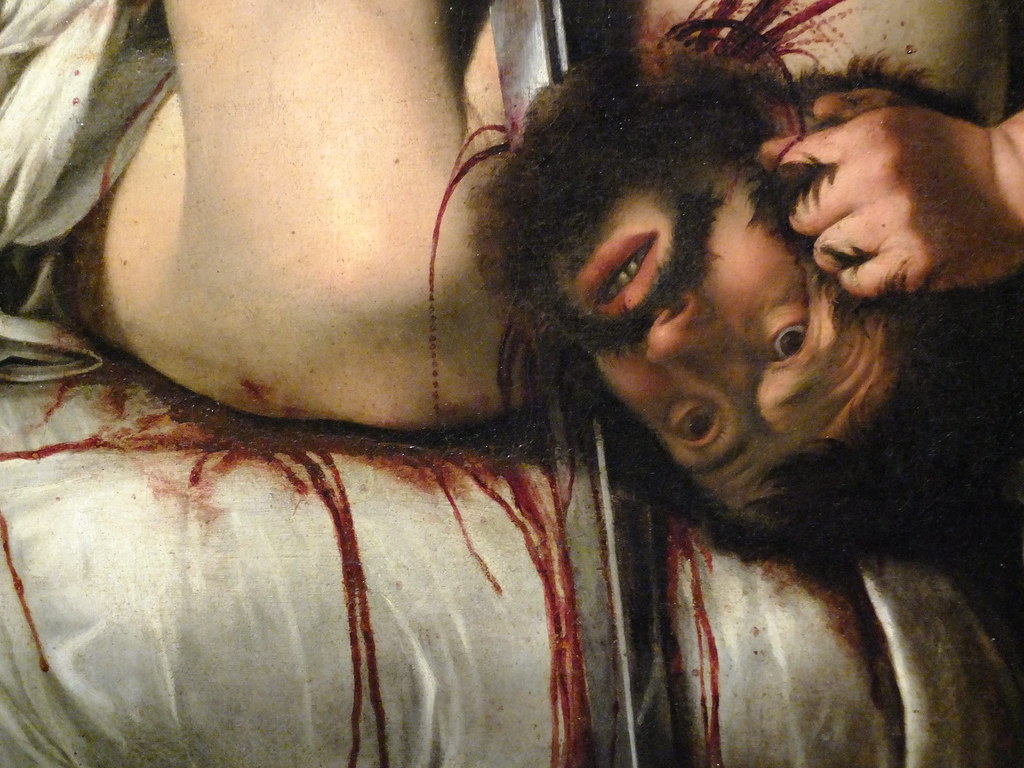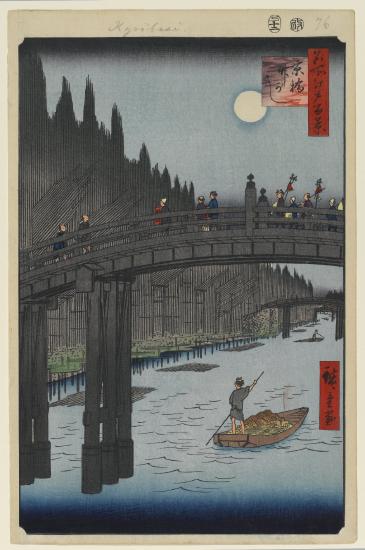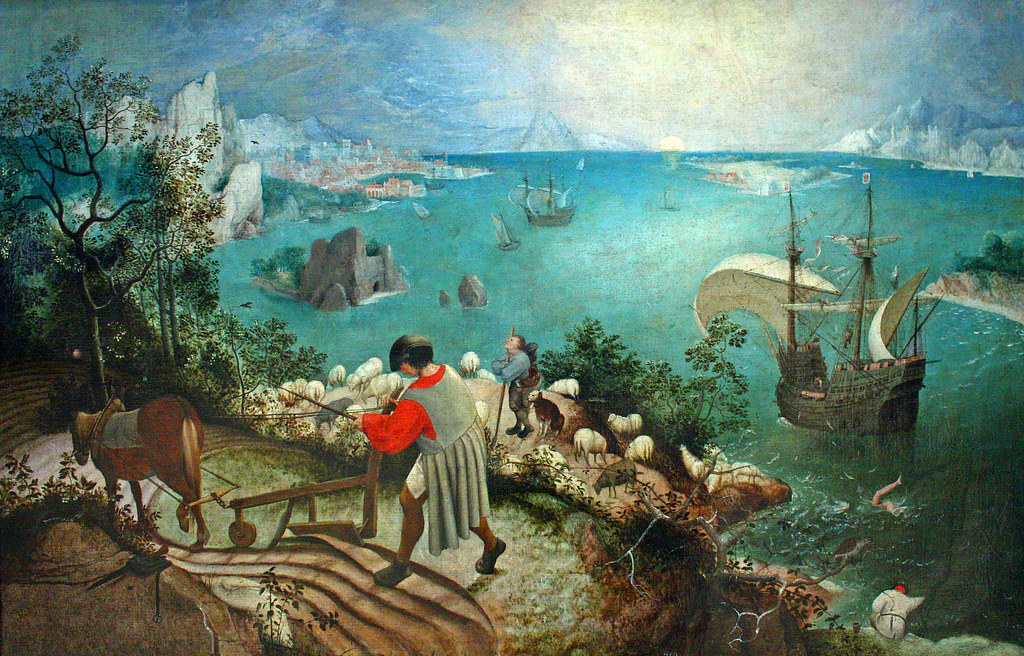3.4: Principles of Design- Emphasis, Focal Point, and Subordination
- Page ID
- 156859
Overview:
Artists create focal points and emphasis to give their work visual and conceptual impact. Emphasis and focal points underscore concepts, themes, or ideas the artist wants to express in an artwork. Subordination removes attention from a particular area, in order to emphasize something else. Artists use different elements of art to draw our attention to important areas such as contrasts, color, direction, and placement.
Focal Point and Emphasis
Focal Point
A focal point is a specific place of visual emphasis that the artist use to give specific emphasis to an important symbol, event, or feature in the artwork.
Emphasis
Emphasis is “Highlighted” or busy areas of the artwork in which the artist uses visual elements to focus our attention. The artist draws attention to particular content by emphasizing the parts of the artwork.
How to use Focal Point and Emphasis in an artwork?
Artists use contrasts, color, direction, and placement relationships to organize elements in an artwork work and draw our attention to important areas.
Contrast:
- Spanish artist Francisco de Zurbarán uses strong contrast to create emphasis and focal point in The Funeral of St. Bonaventure.
- Our eyes are drawn to the white area of the saint before we look at the rest of the characters.
- The white cloth of St. Bonaventure contrasts with darker colors around him and becomes the focal point.1
Francisco de Zurbarán, The Funeral of St. Bonaventure, 1629. Oil on canvas, 8'2" × 7'4". Musée du Louvre, Paris, France. Licensed by Gateways to Art: Understanding the Visual Arts, Third Edition. Copyright © 2015 Thames & Hudson
Color
- An emphasis can be established by creating strong contrasts of light and color.
- In Still Life with Lobster, Anna Vallayer-Coster used the complementary color scheme to focus our attention.
- By painting everything else in the composition a shade of green, she focuses our attention on the red lobster in the foreground.2

Anna Vallayer-Coster, Still Life with Lobster, oil on canvas, 1781. Toledo Museum of Art (2445 Monroe Street), Gallery, 27
Direction
- An implied line can be an effective way to focus our attention on artwork.
- In Artemisia Gentileschi's Judith Decapitating Holofernes, bright light emphasizes Judith’s arms and those of her maidservant and creates implied lines.
- The five bare arms create strong directional lines that lead to the focal point. See the image on the right.
- Directional lines and contrasting values emphasize the story.
- Blood flow from Holofernes’ neck as Judith delivers the fatal blow creates the focal point as all directional lines emerge together in Holofernes' head. 1,3,4
- Click to learn more about this painting: https://smarthistory.org/gentileschi-judith-slaying-holofernes/



Artemisia Gentileschi, Judith Decapitating Holofernes, c. 1620. Oil on canvas, 6'6⅜" × 5'3¾". Uffizi Gallery, Florence, Italy. "The Execution" by failing_angel is licensed under CC BY-NC-SA 2.0.
Placement
- Japanese artist Ando Hiroshige draws our attention to the right side of the work
- The bridge is the largest shape and naturally catches our attention.
- The light value and hard geometry of the moon divert our gaze
- We look at the figure under the bridge because of its placement under the moon, and because it has a definite outline that contrasts with the flat color of the water
- This artwork has three separate focal points: the moon, the bridge, and the figure in a boat
- The varying distances between these three shapes create a rhythm that adds visual interest 1

Ando Hiroshige, “Riverside Bamboo Market, Kyo-bashi,” from One Hundred Famous Views of Edo, 1857. 15 × 10⅜". James A. Michener Collection, Honolulu Academy of Arts, Hawaii
Subordination
- The use of emphasis to draw the viewer’s attention away from a particular part of a composition is referred to as subordination.
- Pieter Bruegel the Elder's Landscape with the Fall of Icarus is a fine example of subordination. In Bruegel’s painting, we are first drawn to the scarlet-smocked man plowing his field because of the bright red shirt he is wearing. The tree on the left, the sunset, and fanciful ships also capture our attention.
- We hardly notice Icarus, whose legs are disappearing into the sea just in front of the large ship on the right.1
- To learn more, check the Royal Museums of Fine Arts of Belgium's Google Arts and Culture article.

Pieter Bruegel the Elder, Landscape with the Fall of Icarus, c. 1555–58. Oil on canvas, mounted on wood, 29 × 44⅛". Musées Royaux des Beaux-Arts de Belgique, Brussels, Belgium. "Bruegel the Elder, Fall of Icarus" by f_snarfel is licensed under CC BY-NC 2.0.
- Emphasis and focal points underscore concepts, themes, or ideas the artist wants to express in an artwork
- Artists use contrasts, color, direction, and placement relationships to organize elements in an artwork work and draw our attention to important areas.
- Subordination is a technique artists use to de-emphasize certain elements in a work of art to make certain the main subject stands out.
Source
- DeWitte, Debra J., Larmann, Ralph M., and Shields, M. Kathryn. Gateways to Art: Understanding the Visual Arts, Third Edition. 2018
- Sayre, Henry M., World of Art, 8th Edition, 2016. Pearson
- Camara, Esperanca. Artemisia Gentileschi, Judith Slaying Holofernes. Smarthistory. https://smarthistory.org/gentileschi...ng-holofernes/
- Google Arts and culture. Royal Museums of Fine Arts of Belgium's https://artsandculture.google.com/st...ewUxXpmuNdcLJg


